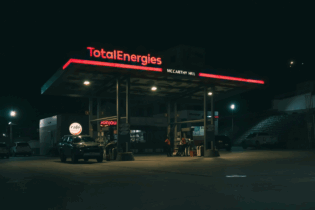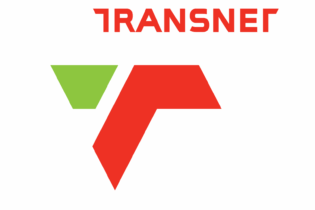Hatch’s Environmental Services Group’s (ESG) Regional Director speaks on the notion of a green logistics corridor and a green port approach when running an industrial operation.
Consulting engineering and project implementation firm Hatch’s Environmental Services Group is successfully integrating sustainability into its clients’ mining developments by means of ‘greening’ the development’s logistics corridor. Hatch Environmental Services Group Regional Director for Africa Max Clark points out that the concept of a green logistics corridor – with a particular emphasis on green ports – is finding increased popularity with Hatch’s mining clients, both locally and internationally. The green port approach centers around the notion that a green logistics corridor should provide competitive logistical operations with a minimal ecological footprint; whilst at the same time sustaining ecosystem functioning and also integrating with local community in order to benefit to the economy on a local, regional and national scale. Hatch’s approach towards greening a client’s logistics corridor follows that of a holistic viewpoint; whereby each of the project’s components (mine, transportation corridor and port terminal) are viewed as a whole and are developed in one strategic approach. Hatch’s strategic approach to environmental management integrates the project lifecycle process with the environmental permitting process, thereby ensuring that the project will remain sustainable into the future, both from an environmental and economic perspective. Hatch’s Environmental Services Group integrates sustainability into both project design and delivery by developing a sustainability framework that links into a company’s existing sustainability policies. A number of components are considered after which broad objectives are set, which often include aspects such as efficient resource use, pollution prevention and corporate social responsibility. “Ultimately we look at what opportunities exist within each of the project’s components for the promotion of sustainability. A lot of our work is risk-based, which often means looking at aspects from a negative perspective. A large amount of the work that we involve ourselves with is outside the confines of the client’s project fence or perimeter. Most projects work on the basis of: “How do we get things right inside the fence?” Whereas we take the stance of: “What are we doing here inside the fence and how does it impact on what is happening outside of the fence?” Clark cites the example of a railway line, whereby few sustainability opportunities will exist if it is a dedicated freight line. On the other hand, however, if the line has multiple users with stations along its routes, opportunities may exist for job creation as well as small to medium enterprise creation. Clark says that the green port approach aims to minimise or maximise the project footprint by minimising the impact zone and maximising the zone of positive influence. “When dealing with a logistics corridor, we aim to push the zone of positive influence as far out as possible. In developing countries we work with a number of corporate social responsibility drivers, which will guide the overall sustainable development of the project. The internal drivers include cultural tradition, socio-economic priorities, governance gaps, crisis response and market access. The external drivers include international standardisation, investment incentives, stakeholder activism and supply chain requirements,” explains Clark. Speaking on the benefits of the green port approach, Clark points out the following benefits: – Cost savings – Reduced risks – Improved access to investment and capital – Improved stakeholder and community relationships– Easier to achieve environmental compliance
– Long-term sustainability Hatch’s green port approach centers around four main components. The first is design and operational efficiency, which looks into the operational requirements of the project. Hatch ensures that these requirements are met efficiently and cost effectively, mostly from an engineering perspective. Design and operational efficiency also takes into account the minimisation of the project’s ecological footprint, which takes into consideration elements such as physical layout, energy efficiency, green house gas (GHG) emissions and use of natural resources. “An example of design and operational efficiency in a port setting is the utilisation of tug boats that burn cleaner fuels and ship to shore cranes that store and use the energy created from the friction produced during operation,” says Clark. The second component is ecosystem functioning as set out by the United Nation’s Millennium Ecosystem Assessment, which recognises ecosystems as a type of asset. “Each element in an ecosystem has a function and if that function had to be replaced with a facility; how much would that facility cost to design, build and operate? Currently, these functions are free, however if damaged to the point of no-repair, they would have to be replaced,” says Clark. He explains within ecosystem functioning, the following components and sub-components are considered when developing a green port: – Supporting (Nutrient cycling and primary production) – Regulating (Climate, water, erosion and water treatment) – Provisioning (Food and genetic resources) – Cultural (Aesthetic, spiritual, educational, recreation, sense of place and cultural heritage) Each sub-component is critical to the overall functioning of a healthy ecosystem. “We don’t only look at ecosystems from just a biodiversity and quality point of view. It is a far more involved and holistic, whereby one actually has to have a greater understanding of the environment,” Clark explains. In an instance whereby a port is being developed each sub-component needs to be taken into consideration and viewed as an asset, whereby an overall value is attached to it through resource economics. Clark cites the recreational sub-component: “Should the development of a port no longer allow recreational activities such as sea-boat angling; a small section of the economy will be directly affected, such as the selling of the fish and the building and maintenance of boats in that area.” The third component of the green port approach is using the project as a vehicle to support economic development through such avenues as development of Small, Medium and Micro Enterprises; green supply chain; direct and indirect job creation and capacity building. The fourth component looks at social integration which highlights corporate citizenship and opportunities to support or add value to local communities. Clark likens a port to a living project that should be integrated socially. “If a client is after long-term sustainability, a happy local and regional community will go a long way in making this happen. Our function is to enable business to see that we all live within one ecosystem, and that there are many approaches that industry can use to design and operate their infrastructure to the benefit of their business, communities and the environment,” concludes Clark.






